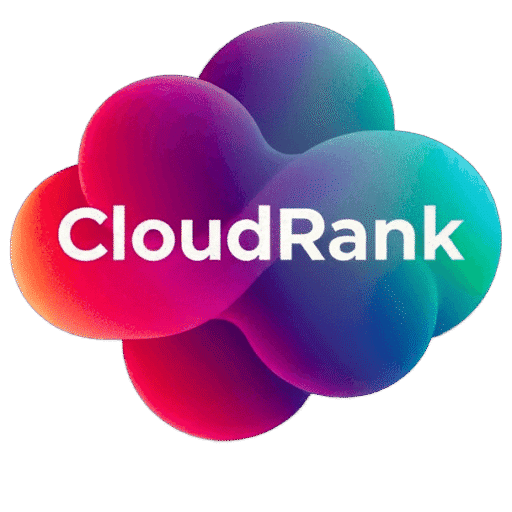In the fast-paced digital age, email marketing remains a stalwart channel for communication and conversion. However, the landscape has significantly evolved, with email automation workflows now at the forefront of marketing strategies. Understanding and implementing these workflows can drastically enhance efficiency, engagement, and ultimately, conversions.
The Importance of Email Automation Workflows
Email automation workflows are sequences of automated emails triggered by specific subscriber actions or predefined conditions. They are designed to nurture leads, engage customers, and drive conversions without the need for constant manual intervention. This frees up time and resources, allowing teams to concentrate on strategy and creativity rather than routine tasks.
Streamlining Operations with Automation
Automation in email marketing not only smooths operations but also ensures consistency in communication.
By harnessing email automation software, businesses can maintain a steady stream of information to their audience, tailored to their interactions and preferences. This consistency builds trust and fortifies the brand-audience relationship over time.
For IT project managers, this presents an opportunity to integrate advanced AI tools into their project workflows, optimising efficiency and productivity. With AI-driven email automation, businesses can analyse vast amounts of data to personalise messages, predict customer behaviour, and improve engagement. This data-driven approach allows for more informed decision-making and strategic planning.
Boosting Engagement through Personalisation
Personalisation is at the core of effective email marketing. With automation, businesses can deliver highly personalised content that resonates with their audience on an individual level.
This goes beyond simply addressing the recipient by name; it involves tailoring content based on past behaviours, preferences, and interactions.
AI algorithms can segment audiences into micro-groups, ensuring that each email sent is relevant and engaging. This level of personalisation increases the likelihood of engagement and conversion, as recipients receive content that is aligned with their interests and needs. By making subscribers feel understood and valued, businesses can foster long-term loyalty and advocacy.
Driving Conversions with Targeted Campaigns
Email automation workflows enable businesses to create targeted campaigns that guide subscribers through the sales funnel. By sending the right message at the right time, businesses can effectively nurture leads and drive conversions. This targeted approach ensures that each interaction is purposeful and contributes to the overall marketing goals.
For entrepreneurs, understanding these capabilities can lead to strategic decisions that enhance business growth. By applying AI in email workflows, businesses can ensure their messages are not only reaching the right audience but also resonating on a personal level. This strategic alignment between messaging and audience needs is crucial for achieving high conversion rates and sustained growth.
Ready-to-Implement Email Automation Sequences
Creating effective email automation sequences requires a combination of strategic planning and technical know-how. Below are some proven sequences that can be tailored to fit various business models and objectives.
Welcome Series
A welcome series is the first impression your brand makes on a new subscriber. This sequence should introduce your brand, set expectations, and encourage engagement.
Typically, a welcome series includes 3-5 emails sent over a week, gradually familiarising the subscriber with your offerings.
Crafting a Memorable First Impression
The first email in the welcome series is crucial as it sets the tone for future interactions. A warm and personalised greeting can make subscribers feel valued from the outset. It’s essential to convey enthusiasm and gratitude for their interest in your brand.
An overview of your brand and what makes it unique should follow. Highlighting your core values and mission can help create a connection with your audience. This is also an opportunity to introduce your key products or services, sparking curiosity and interest.
Encouraging Engagement and Exploration
Subsequent emails in the welcome series should encourage subscribers to explore your offerings further. This could include showcasing customer testimonials, success stories, or user-generated content.
By demonstrating the value and impact of your products or services, you can build trust and credibility.
Incentives for engagement, such as a discount or free resource, can motivate subscribers to take action. Offering a time-limited offer can create a sense of urgency, prompting immediate engagement. This approach not only boosts initial conversions but also sets the stage for ongoing interaction.
Building a Relationship with New Subscribers
The final email in the welcome series should focus on building a long-term relationship with subscribers. Encourage them to connect with your brand on social media or join a community forum. Providing opportunities for interaction can deepen the relationship and foster loyalty.
Requesting feedback or preferences can also be valuable. Understanding subscriber needs and interests allows for more bespoke and effective communication in the future.
By actively involving subscribers in the conversation, you demonstrate that their opinions and experiences matter.
Lead Nurturing Sequence
For businesses focused on converting leads into customers, a lead nurturing sequence is crucial. This sequence targets prospects who have shown interest but are not yet ready to purchase.
Educating and Addressing Pain Points
Educational content is a cornerstone of the lead nurturing sequence. By providing valuable information that addresses common issues, businesses can position themselves as knowledgeable and trustworthy. This could include blog posts, webinars, or whitepapers that offer solutions to challenges faced by prospects.
Case studies or testimonials can further build trust by showcasing real-world success stories. Prospective customers are more likely to convert when they see tangible evidence of how others have benefited from your offerings.
Highlighting these stories can create a compelling case for choosing your brand.
Guiding Prospects Through the Sales Funnel
A clear call-to-action is essential in guiding prospects further down the sales funnel. Each email in the lead nurturing sequence should have a specific purpose, whether it’s to schedule a consultation, download a resource, or make a purchase. By providing a logical progression of actions, you can move prospects closer to conversion.
Personalisation plays a key role in this process. Tailoring content to individual interests and behaviours ensures that each lead receives relevant and engaging information. This approach increases the likelihood of conversion, as prospects feel understood and valued.
Overcoming Objections and Building Confidence
Overcoming objections is a critical aspect of lead nurturing. Addressing potential concerns or hesitations head-on can build confidence and trust.
This could involve providing additional information, offering a money-back guarantee, or highlighting risk-free trials.
By proactively addressing objections, businesses can remove barriers to conversion. This not only increases the likelihood of purchase but also fosters a positive perception of the brand. When leads feel confident in their decision, they are more likely to become loyal customers and advocates.
Cart Abandonment Sequence
Cart abandonment is a common challenge in e-commerce. An automated cart abandonment sequence can recover potentially lost sales by reminding customers of their incomplete purchases.
Prompting a Return to the Shopping Trolley
Timing is crucial in cart abandonment sequences. A prompt reminder of the abandoned trolley should be sent within a few hours of the initial abandonment. This ensures that the potential purchase is still fresh in the customer’s mind.
The reminder email should clearly outline the items left in the basket, along with any relevant details or benefits. Visuals can be particularly effective in capturing attention and reigniting interest. By presenting the products in an appealing manner, you increase the likelihood of conversion.
Highlighting Product Benefits and Incentives
Highlighting the benefits of the products left behind can encourage customers to complete their purchase. This could involve emphasising unique features, quality, or value for money. By reinforcing the reasons for choosing these products, you can motivate customers to take action.
Incentives such as free delivery or discounts can provide the extra nudge needed to finalise the purchase. A time-limited offer can create urgency and prompt immediate action. This approach not only recovers potentially lost sales but also enhances customer satisfaction and loyalty.
Providing Assistance and Addressing Concerns
Offering assistance can also be a valuable component of cart abandonment sequences. Inviting customers to get in touch with questions or concerns demonstrates a commitment to customer service. By addressing any uncertainties or obstacles, you can remove barriers to conversion.
Providing a direct line of communication, such as a customer support helpline or live chat, can be particularly effective. This not only resolves issues quickly but also builds trust and confidence in your brand. When customers feel supported, they are more likely to complete their purchase and return in the future.
Re-engagement Sequence
Over time, some subscribers may become inactive. A re-engagement sequence aims to rekindle interest and bring them back into the fold.
Rekindling Interest with Personalised Reminders
Personalised reminders of past interactions or purchases can be a powerful tool in re-engagement sequences.
By reminding subscribers of their previous positive experiences, you can reignite interest and curiosity. This could involve highlighting past purchases, reviews, or interactions with your brand.
Special offers or exclusive content can also entice inactive subscribers to return. Providing value in the form of discounts, freebies, or access to premium content can motivate re-engagement. This approach not only rekindles interest but also reinforces the value of staying connected with your brand.
Gathering Feedback and Understanding Preferences
Requesting feedback or preferences is another effective strategy in re-engagement sequences. By understanding why subscribers became inactive, you can tailor future communications to better meet their needs. This could involve conducting surveys, polls, or one-to-one interviews to gather insights.
Demonstrating a willingness to listen and adapt can build trust and loyalty.
When subscribers feel that their opinions and preferences are valued, they’re more likely to re-engage and remain active. This ongoing dialogue can also provide valuable insights for optimising your overall marketing strategy.
Offering Incentives for Continued Engagement
Incentives for continued engagement can be a powerful motivator in re-engagement sequences. This could involve offering loyalty rewards, referral bonuses, or access to exclusive events. By providing tangible benefits for staying connected, you can incentivise ongoing interaction.
Creating a sense of community can also be effective in re-engagement efforts. Encouraging subscribers to join online forums, social media groups, or customer communities can foster a sense of belonging. This not only enhances engagement but also strengthens brand loyalty and advocacy.
Email Workflow Best Practices
Implementing email automation sequences is not just about setting them up and allowing them to run. Continuous optimisation and adherence to best practices are crucial for success.
Personalisation and Segmentation
The more personalised an email, the higher the likelihood of engagement. Use AI to segment your audience based on behaviour, preferences, and demographics, and tailor your content accordingly. This ensures that each email resonates with its intended recipient, increasing the chances of conversion.
Testing and Optimisation
Regularly test various elements of your emails, such as subject lines, content, and call-to-action buttons. Use A/B testing to determine what resonates best with your audience and make data-driven adjustments. This iterative approach ensures that your email campaigns remain effective and relevant.
Compliance with Regulations
Ensure your email workflows comply with relevant laws and regulations, such as the GDPR and CAN-SPAM Act. This includes obtaining explicit consent to send emails and providing easy-to-use unsubscribe options. Adhering to these regulations not only ensures legal compliance but also builds trust with your audience.
Leveraging Technology for Workflow Optimisation
The integration of workflow automation tools can significantly enhance the effectiveness of your email marketing efforts. Platforms like Mailchimp, HubSpot, and ActiveCampaign offer robust solutions for creating and managing email automation workflows.
Choosing the Right Tools
Selecting the right email automation software depends on your specific needs and goals. Consider factors such as ease of use, integration capabilities, and the level of customer support provided.
This ensures that the chosen platform aligns with your business objectives and enhances your marketing strategy.
Continuous Learning and Adaptation
The digital landscape is constantly evolving, and staying informed about the latest advancements in AI and email automation is essential. Attend webinars, read industry publications, and engage with expert communities to keep your skills sharp. This commitment to continuous learning ensures that your email marketing efforts remain at the forefront and effective.
Integrating AI and Machine Learning
The integration of AI and machine learning can take your email automation workflows to the next level. These technologies offer advanced capabilities for personalisation, segmentation, and optimisation. By leveraging AI, businesses can enhance their email marketing strategies and achieve higher conversion rates.
Conclusion
Email automation workflows, powered by AI, represent a paradigm shift in how businesses engage with their audience. By implementing ready-to-use sequences and adhering to best practices, businesses can enhance their communication strategies, optimise workflows, and achieve higher conversion rates.
For IT project managers, technology writers, and entrepreneurs, mastering email automation is a gateway to improved efficiency and profitability. Embrace the power of automation today and watch your business soar to new heights.




